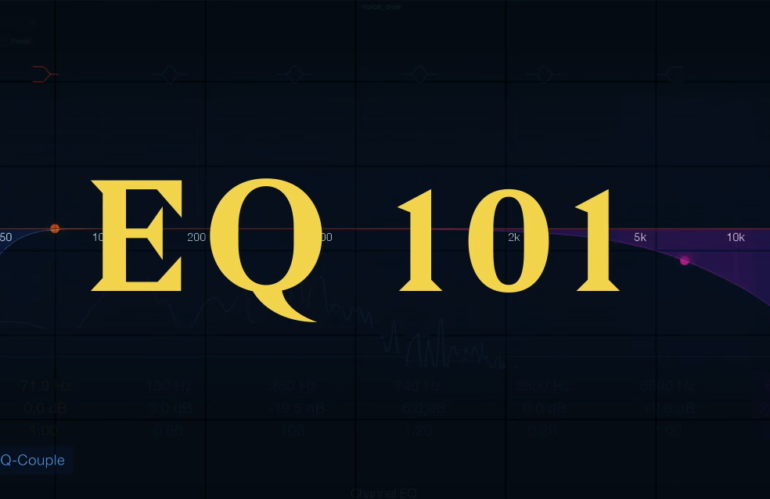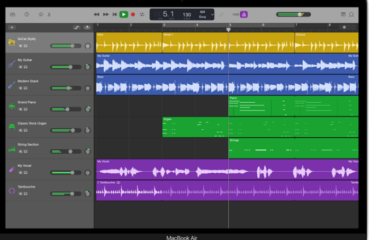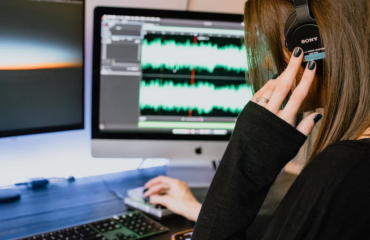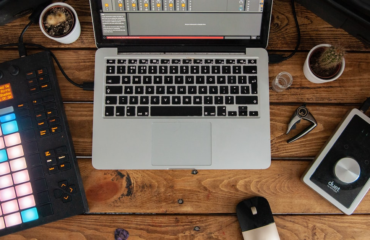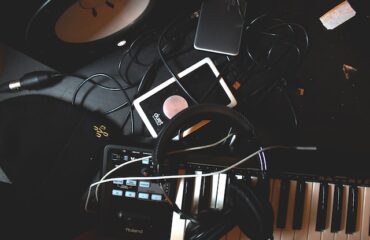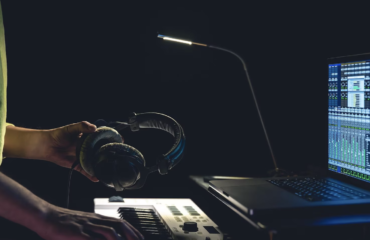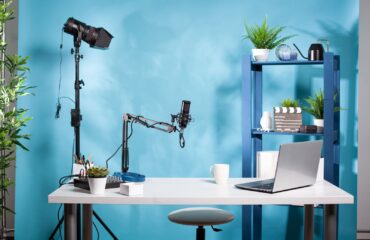Explore the primary categories of EQ shelves: high and low shelf. Similar to high and low pass filters, these shelves provide the ability to shape your sound by either boosting or cutting specific frequency ranges.
The high shelf is particularly useful for controlling excessive treble frequencies, while the low shelf focuses on managing the bass response. Unlike pass filters, shelves offer more subtle cuts and can also be employed for boosting. They allow for uniform adjustments to signals above or below a designated frequency. Enhancing the low shelf is perfect for adding depth to instruments like bass, acoustic guitar, strings, piano, and any element requiring a stronger low-end presence.
On the other hand, high shelf boosts can add crispness and sparkle to percussion elements such as hats, cymbals, shakers, and vocals. Mastering the art of utilizing EQ effectively is essential for producing polished, radio-ready songs in your home studio. Equalization plays a crucial role in shaping the overall tone of your sounds. It involves understanding the frequency spectrum, dividing it into distinct ranges (low, low-mid, mid, high-mid, and high), becoming familiar with parameter controls, and mastering different filter types, including shelves. These skills are fundamental to achieving professional-level music mixing.
Demystifying EQ Interfaces: Understanding the Basics
For newcomers, navigating the interface of an EQ can be overwhelming at first. However, by the end of this guide, you’ll gain a clearer understanding of its layout. We’ll primarily focus on a parametric EQ, as depicted above, for visual reference.
Let’s start by comprehending the horizontal axis. The markings along the bottom represent sound frequencies measured in hertz (Hz) and kilohertz (kHz). Keep in mind that 1000 Hz is equal to 1 kHz. Most equalizers cover a frequency range of 20 Hz to 20 kHz, which encompasses the audible range for human ears.
On the vertical side, you’ll typically find volume level readings expressed in decibels (dB). It’s worth noting that some EQs may display these readings on the opposite side. The interface also incorporates essential controls such as gain, frequency selector, bandwidth (referred to as “Q”), and filter type selectors, which we’ll explore in greater detail later in this guide.
Exploring Essential EQ Filters: An Overview
Equalizers offer a variety of filter types to shape your audio. Among the commonly used filters are the bell, high-pass filter (low cut), low-pass filter (high cut), high shelf, and low shelf. While there are other filters available such as band stop (notch), band pass, and tilt filters, they are used less frequently and have specific applications.
The icons for shelf filters resemble a sideways two-pronged fork, with the prong-like ends indicating their ability to cut or boost frequencies. The direction in which the icons face indicates the end of the frequency spectrum they affect. A left-facing icon represents low shelves, while a right-facing icon represents high shelves.
High Pass Filter: Carving Out the Low End
The high pass filter, also known as a low cut filter, effectively removes or reduces frequencies in the bass-heavy lower end of the spectrum. It allows only frequencies above the set cut-off point to pass through. In EQ interfaces, you’ll typically see the cut gradually sweeping from left to right.
When the high pass filter is engaged, it gradually decreases the volume of sounds below the selected frequency, creating a descending slope. In the provided illustration (Image 1), the cut-off point is set around 60Hz, resulting in a volume reduction of approximately -2dB. As you move further down the frequency range, around 20Hz, the reduction becomes more significant, reaching approximately -80dB. Beyond the point where the slope reaches the floor, any sound is completely eliminated. Most EQs offer adjustability, allowing you to modify the slope of the cut-off point. Some EQs have fixed values, typically set at a default of 12dB.
Low Pass Filter: Filtering out the High Frequencies
The low pass filter functions as the counterpart to the high pass filter, operating in the upper range of the frequency spectrum. Its purpose is to selectively remove or attenuate high frequencies, allowing only sounds below the designated cut-off point to pass through. Unlike the high pass filter, the cut is typically applied from the right side to the left in EQ interfaces, indicating the removal of frequencies above the set point.
Shelf Filters: A Subtle Approach to Sound Shaping
Shelf filters have the ability to affect high and low frequencies, but with a more gradual impact. Unlike pass filters, which completely eliminate sounds at the specified frequency, shelf filters attenuate sounds above or below the set point by an equal volume level.
- Low Shelf Filter: Subtle Control over Low Frequencies
The low shelf filter offers a nuanced alternative to the low cut filter (high pass). Instead of completely removing sound signals below a certain frequency, it reduces their volume by a desired amount. The image below provides a visual comparison of the low shelf filter’s operation compared to the low cut filter.
In addition to its filtering function, the low shelf filter can also be used in boost mode to amplify specific frequencies. When used as a low shelf boost, it increases the volume level of desired low-end frequencies starting from the set point.
- High Shelf Filter: Gentle Control over High Frequencies
Similar to the high cut filter (low pass), the high shelf filter provides subtle control over high frequencies, resembling the approach of the low shelf filter. It can also be used in boost mode to enhance treble frequencies. The image below illustrates the difference between the high cut filter and high shelf filter in cutting mode.
Overall, there are four possible variations of shelf filters: low shelf cut, low shelf boost, high shelf cut, and high shelf boost. These versatile tools offer flexible options for shaping the desired sound.
Control Parameters for Precision
| Control Parameters | Description |
|---|---|
| Gain Control | Adjusts the amount of attenuation or boost applied by the shelf filter. Can be modified using a dedicated knob or slider. Some plugin parametric equalizers also support gain adjustment by clicking and dragging the shelf vertically. |
| Q Control | Governs the transition of the shelf filter from the cut-off frequency to its highest or lowest point, depending on the boost or cut. Fine-tuning this parameter ensures a natural and seamless effect, determining the transition’s smoothness. |
| Frequency Selection | Enables the selection of the starting point where the shelf filter begins to cut or boost the sound. Apart from using knobs or sliders, you can adjust the shelving point by clicking and dragging a node horizontally on the frequency spectrum. |
| Slope Selector | Allows the adjustment of the slope steepness in shelf filters. While the impact is less pronounced than in pass filters, it offers more precision for steep cuts or high boosts. Some EQs may have fixed, unadjustable shelf slopes. |
When to Utilize Shelf Filters in Mixing
Shelf filters exhibit unique qualities that make them highly effective in the “corner frequencies” of a mix, encompassing the extreme highs and lows. Their ability to deliver both subtle and drastic adjustments while maintaining a pleasant sound distinguishes them from bell or pass filters. In these frequency ranges, shelf filters excel at shaping the sound, offering a more balanced and refined result compared to other filter types.
The choice between a shelf filter and a bell or pass filter depends on whether you aim to boost or cut frequencies. If your objective is to boost, pass filters are not suitable as they only attenuate. In such cases, you can choose between bell and shelf filters for achieving the desired effect.
- For boosting tasks, especially when seeking to add sheen or crispness to a dull sound, shelf filters are often a better choice over broad bell filters. Similarly, when dealing with boomy low frequencies or harsh highs, the subtlety of low or high shelf cuts makes them the ideal tool;
- To make informed decisions during a mixing session, it is recommended to follow the conventional practice of comparison. This is why most EQ plugins nowadays feature A-B comparison buttons. Some advanced EQ plugins, such as DMG Audio’s Equilibrium, go even further by offering up to eight comparison buttons (A to H), enhancing the comparison process.
If you haven’t already delved into this plugin feature, now is the perfect time to unlock its potential. This feature extends beyond EQs and can enhance your entire mixing and mastering workflow. By assigning different filter types to slots A and B, you can easily switch between them and compare the results. This approach aligns with the fundamental principle of sound engineering: honing your listening skills. By training your ears, you gain the ability to make informed decisions and achieve outstanding outcomes in your audio projects. Embrace the power of comparison and elevate your expertise in sound engineering.
Practical Applications of Shelf Filters in Mixing
By applying a low shelf boost, you can infuse depth and body into bass guitars or synth bass that may lack lower frequencies. Solo acoustic guitars and strings can benefit from a subtle low shelf boost, enriching their sound and adding body. When dealing with excessive low-end in a bass-heavy instrument, consider using a low shelf cut instead of completely filtering it out with a low cut filter. To refine the sound and manage unwanted frequencies, combining the low shelf cut with a slight bell notch in specific frequency ranges can yield even better results. In mastering sessions, low shelf filters are invaluable for boosting weak lows or taming boomy frequencies in the overall mix.
Shifting focus to the higher end of the frequency spectrum, a high shelf boost can introduce brilliance and sparkle to vocals that lack presence. It is also highly effective for enhancing trembly percussion instruments such as cymbals, tambourines, and hi-hats. Adding a subtle touch of high shelf boost to instruments like acoustic guitars and piano can elevate their presence and ensure they stand out in the mix. In mastering, a high shelf filter can be utilized to brighten up a mix that lacks energy. However, it is crucial to exercise restraint when using high shelf boosts to avoid creating harsh or overly bright sounds.
Conclusion
Congratulations! You now have a solid understanding of EQ shelf filters. The creative possibilities they offer are limitless, so don’t hesitate to explore and experiment further. Armed with this knowledge, I hope you’ll incorporate shelf filters more frequently into your home music production sessions. Enjoy the process of mixing and have a wonderful time creating music!
